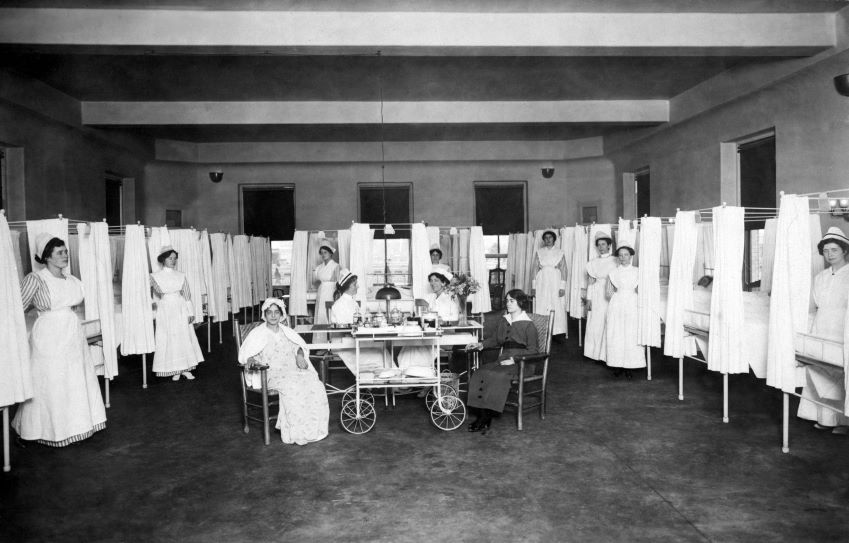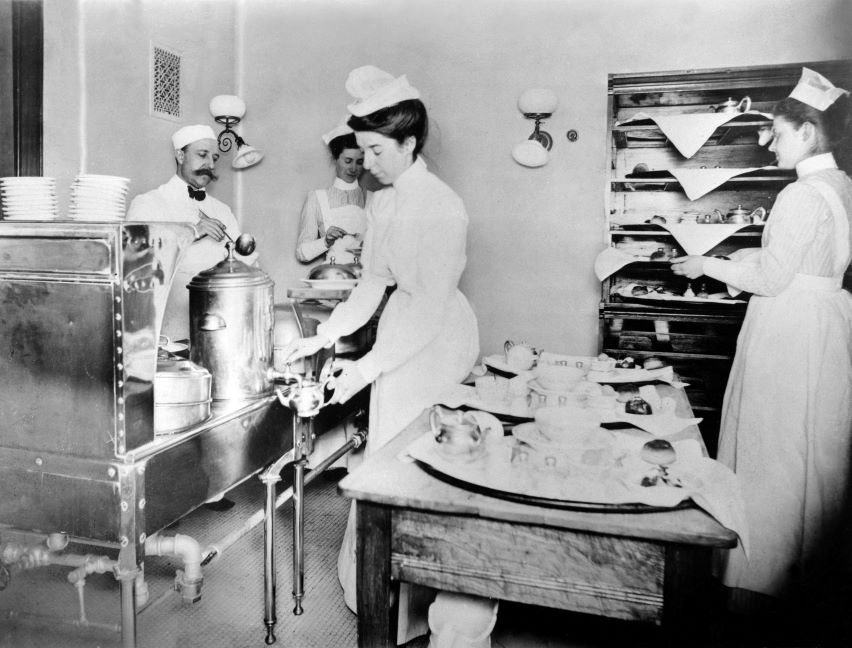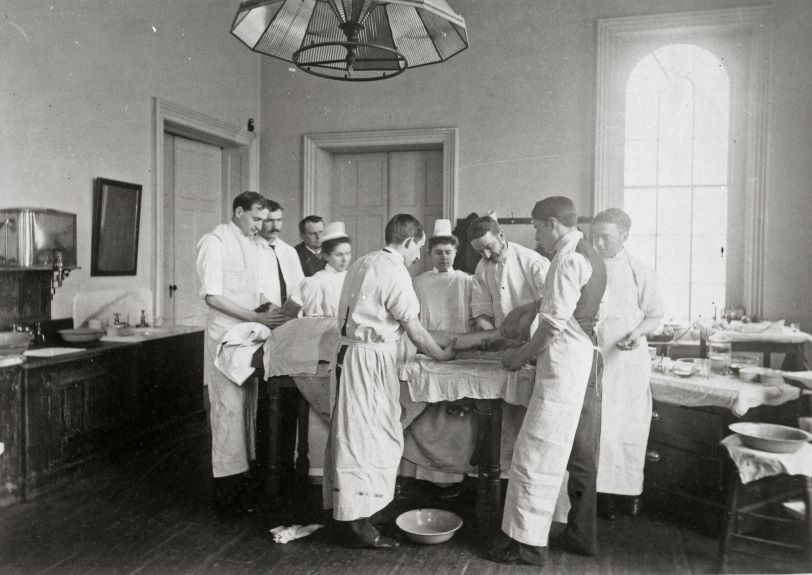CELEBRATING OUR NURSES
This year, Nurses’ Week is May 6th through 12th, and the theme is “Nurses Make the Difference.” To recognize the invaluable contributions of nurses, here’s a brief overview of the evolution of nurses’ responsibilities and education.
In the early days of American nursing, nurses simply observed changes in the patient’s condition and reported to the attending physician. They were taught to change bandages, and feed and clean patients and were in charge over the ward. At this point, any woman could take the job and at times, some unsavory characters filled the position. There was no formal training or educational system in place.

By the mid-1800s, nurses were entrusted with taking vitals, preparing nourishing meals to meet specific patients needs, and administering medications on the instructions of the physicians. They also began to assist in operating theaters.

Roosevelt Hospital Private Pavilion serving pantry
Dr. Robert Abbe and staff in the operating room.

As medical and scientific breakthroughs were made, nursing benefited from better instruction on the ward, supplemented with weekly class lectures by medical staff. By the 1870s the first American nursing school opened. Instruction started on the wards, and the students covered the wards for the first few years.
The first of the Mount Sinai Health System Hospitals schools, The Mount Sinai Training School for Nurses, opened in 1881. Its history is chronicled in the book The Forty-Seven Hundred. The former St. Luke’s Hospital Training School for Nurses, now Mount Sinai Morningside, opened in 1888 and in 1896 the former Roosevelt Hospital, now Mount Sinai West, opened their training school. Read some of that history here. Lastly, The Beth Israel Hospital School of Nursing, now Mount Sinai Phillips School of Nursing, opened in 1902.

Roosevelt Hospital nursing instruction on ward by Alfred Eisenstaedt – The LIFE Picture Collection, Getty Images

As scientific break throughs were made, nursing benefited from better instruction on the ward, with weekly lectures by medical staff.
An example of the early curriculum for nurses, taken from the Roosevelt Hospital School for Nursing, included monthly focus on aspects of anatomy, physiology, materials medica (the sources, nature, properties, and preparation of drugs), gynecology, digestion, ophthalmology and otology, the practice of medicine, the ethics of private nursing, massage, nutrition and cooking, and surgery, including surgical diseases and emergencies. Over time, the curriculum expanded and as graduate nurses were hired to cover the floors, student nurses began to move from ward duty to attend classes full time.

By the 1960s, nursing associations were pressing for university-based bachelor degree programs for RNs, as opposed to hospital-based certificate programs. This was accomplished by the early 1970s as financial struggles added to the pressure to close hospital-based schools.
Today we honor our highly educated nursing staff, the back bone of health care.

